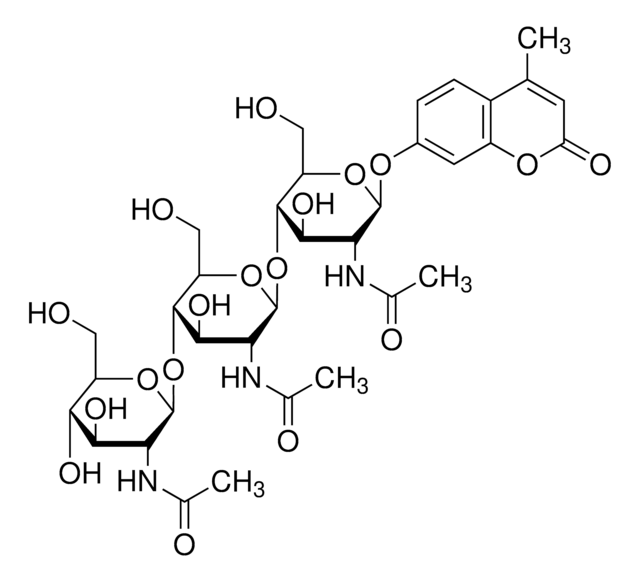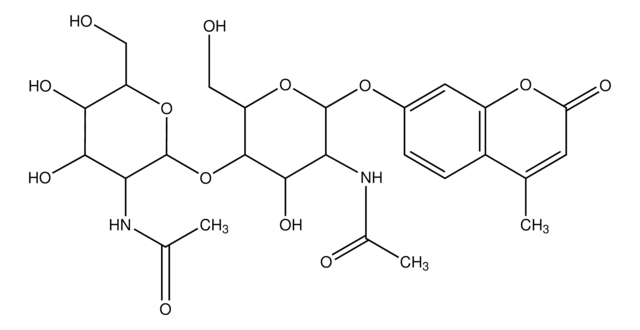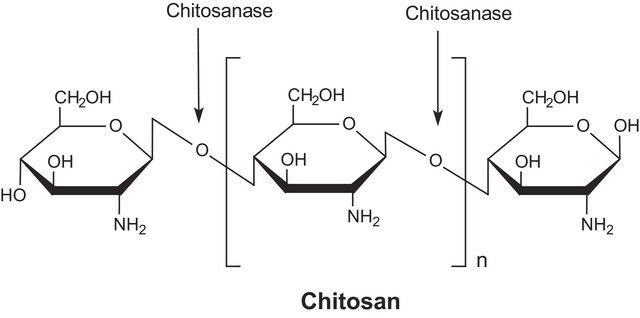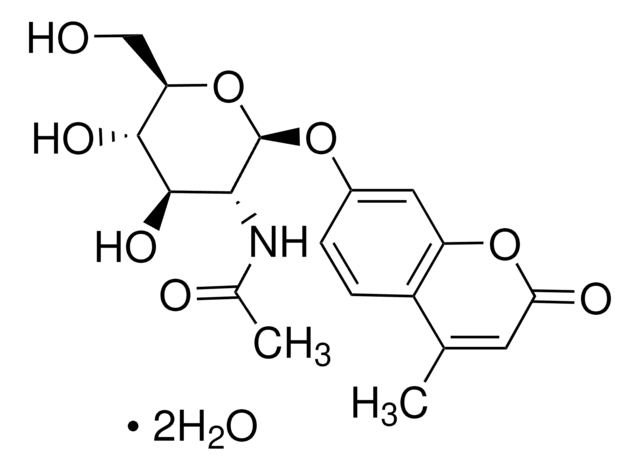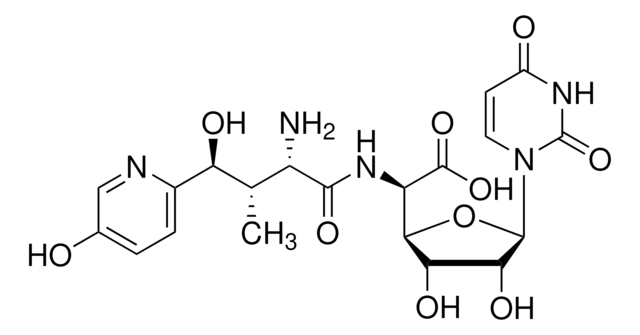CS0980
Chitinase Assay Kit
sufficient for 100 multiwell tests
Synonyme(s) :
Chitinase Activity Detection Kit
About This Item
Produits recommandés
Utilisation
sufficient for 100 multiwell tests
Niveau de qualité
Rapport des absorbances
405 nm (Absorbance)
Conditions d'expédition
wet ice
Température de stockage
2-8°C
Informations sur le gène
human ... CHIA(27159) , CHIT1(1118)
Description générale
Application
The kit provides all the reagents required for efficient detection of chitinase activity in fungal and bacterial growth media, macrophage lysates, and purified enzyme preparations. In addition, the kit provides three different substrates for the detection of the various types of the chitinolytic activity:
- 4-Nitrophenyl N,N′-diacetyl-β-D-chitobioside - substrate suitable for exochitinase activity detection (chitobiosidase activity)
- 4-Nitrophenyl N-acetyl-β-D-glucosaminide - substrate suitable for exochitinase activity detection (β-N-acetylglucosaminidase activity)
Actions biochimiques/physiologiques
The chitinolytic enzymes are also categorized based on their enzymatic action on chitin substrates. Endochitinases are defined as the enzymes catalyzing the random cleavage at internal points in the chitin chain. Exochitinases catalyze the progressive release of acetylchitobiose or N-acetylglucosamine from the non-reducing end of chitin, and are referred to as chitobiosidase and β-N-acetylglucosaminidase, respectively.
Chitinases perform different functions in different organisms. In bacteria, they are mainly involved in nutritional processes. In yeast and various fungi, these enzymes participate in morphogenesis. In animals and plants, chitinases primarily play a role in the defense of the organism against pathogen attack.
Remarque sur l'analyse
Composants de kit seuls
- Assay Buffer 20 mL
- 4-Nitrophenyl N-acetyl-β-D-glucosaminide 10 mg
- 4-Nitrophenyl N,N′-diacetyl-β-D-chitobioside 5 mg
- 4-Nitrophenyl β-D-N,N′N′′-triacetylchitotriose 1 mg
- Chitinase from Trichoderma viride 1 mg
- p-Nitrophenol Solution, 10 mM 1 mL
- Sodium Carbonate 1 g
Produit(s) apparenté(s)
Mention d'avertissement
Danger
Mentions de danger
Conseils de prudence
Classification des risques
Carc. 2 - Eye Irrit. 2 - Resp. Sens. 1 - STOT RE 2 Oral
Organes cibles
Liver,Kidney
Code de la classe de stockage
10 - Combustible liquids
Certificats d'analyse (COA)
Recherchez un Certificats d'analyse (COA) en saisissant le numéro de lot du produit. Les numéros de lot figurent sur l'étiquette du produit après les mots "Lot" ou "Batch".
Déjà en possession de ce produit ?
Retrouvez la documentation relative aux produits que vous avez récemment achetés dans la Bibliothèque de documents.
Les clients ont également consulté
Notre équipe de scientifiques dispose d'une expérience dans tous les secteurs de la recherche, notamment en sciences de la vie, science des matériaux, synthèse chimique, chromatographie, analyse et dans de nombreux autres domaines..
Contacter notre Service technique


